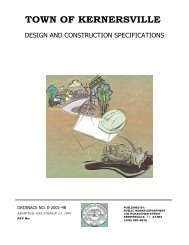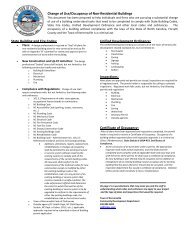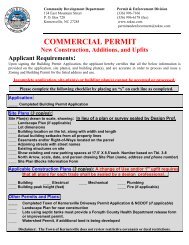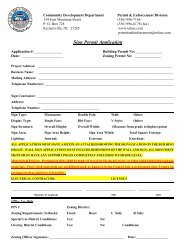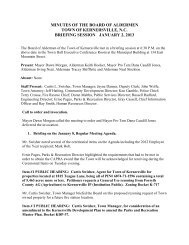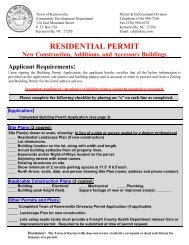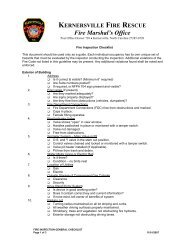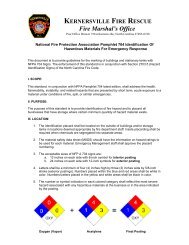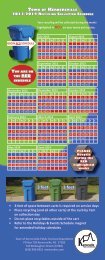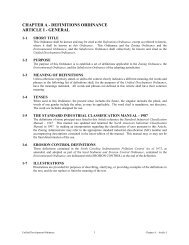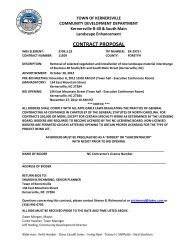Tree Maintenance - 52 Things You Can Do for Your ... - City of Durham
Tree Maintenance - 52 Things You Can Do for Your ... - City of Durham
Tree Maintenance - 52 Things You Can Do for Your ... - City of Durham
You also want an ePaper? Increase the reach of your titles
YUMPU automatically turns print PDFs into web optimized ePapers that Google loves.
<strong>Tree</strong> <strong>Maintenance</strong> - How To Prune<br />
Pruning is the removal <strong>of</strong> branches, living or dead, from woody plants. The first rule <strong>of</strong> pruning is do no<br />
cutting without a reason.<br />
Improper pruning can cause damage that will last the lifetime <strong>of</strong> the tree - or even shorten the lifespan <strong>of</strong> the tree.<br />
Pruning is the most common tree maintenance procedure. Pruning cuts must be made with an<br />
understanding <strong>of</strong> how the tree will respond to the cut. Improper pruning can cause damage, which continues <strong>for</strong><br />
the life <strong>of</strong> the tree. <strong>You</strong>r goal should be pruning to yield a healthy, aesthetically pleasing tree.<br />
Guidelines <strong>for</strong> Correct Pruning, by Dr. Alex Shigo<br />
Correct pruning is the best thing you can do <strong>for</strong> your tree. Here are the guidelines (see diagram):<br />
Natural Target Pruning<br />
Locate the branch bark ridge (BBR)<br />
Find target A - outside BBR<br />
Find target B - where branch meets collar<br />
If B cannot be found, drop an imaginary line at AX. Angle XAC equals XAB.<br />
Stub cut the branch.<br />
Make final cut at line AB (with power saws make final cut on upstroke.)<br />
<strong>Do</strong> Not:<br />
Make flush cuts behind the BBR<br />
Leave living or dead stubs<br />
Injure or remove the branch collar<br />
Paint cuts<br />
The best time to prune living branches is late in the dormant season or very early in spring be<strong>for</strong>e leaves<br />
<strong>for</strong>m. Dead and dying branches can be pruned anytime. Use sharp tools! Make clean cuts. Be careful with<br />
all tools. Safety first! Here are some other pruning tips:<br />
Think Twice<br />
No branch should be removed without a reason. Common reasons <strong>for</strong> pruning are to remove dead branches, to<br />
remove crowded or rubbing limbs and to eliminate hazards.<br />
Respect your Elders<br />
Mature trees should require little routine pruning. A widely accepted rule <strong>of</strong> thumb is never to remove more<br />
than one fourth <strong>of</strong> a tree's leaf bearing crown. In a mature tree, pruning even a single, large-diameter limb can<br />
create a wound that the tree may not be able to close.<br />
The older and larger a tree becomes, the less energy it has in reserve to close wounds and defend against decay<br />
and insect attack. The pruning <strong>of</strong> large, mature trees is usually limited to the removal <strong>of</strong> dead or potentially



